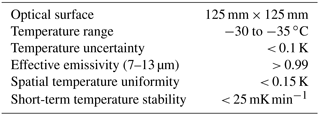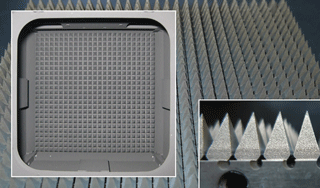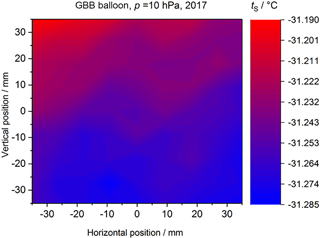Friedl-Vallon, F.: Five Years of GLORIA Flights: Results and Lessons Learnt,
in: Light, Energy and the Environment, p. FM3E.3, Opt. Soc. Am.,
https://doi.org/10.1364/FTS.2016.FM3E.3, 2016. a
Friedl-Vallon, F., Maucher, G., Seefeldner, M., Trieschmann, O., Kleinert,
A.,
Lengel, A., Keim, C., Oelhaf, H., and Fischer, H.: Design and
characterization of the balloon-borne Michelson Interferometer for Passive
Atmospheric Sounding (MIPAS-B2), Appl. Opt., 43, 3335–3355,
https://doi.org/10.1364/AO.43.003335,
2004. a
Friedl-Vallon, F., Riese, M., Maucher, G., Lengel, A., Hase, F., Preusse, P.,
and Spang, R.: Instrument concept and preliminary performance analysis of
GLORIA, Adv. Space Res., 37, 2287–2291,
https://doi.org/10.1016/j.asr.2005.07.075, 2006. a
Friedl-Vallon, F., Gulde, T., Hase, F., Kleinert, A., Kulessa, T., Maucher,
G.,
Neubert, T., Olschewski, F., Piesch, C., Preusse, P., Rongen, H., Sartorius,
C., Schneider, H., Schönfeld, A., Tan, V., Bayer, N., Blank, J., Dapp, R.,
Ebersoldt, A., Fischer, H., Graf, F., Guggenmoser, T., Höpfner, M.,
Kaufmann, M., Kretschmer, E., Latzko, T., Nordmeyer, H., Oelhaf, H., Orphal,
J., Riese, M., Schardt, G., Schillings, J., Sha, M. K., Suminska-Ebersoldt,
O., and Ungermann, J.: Instrument concept of the imaging Fourier transform
spectrometer GLORIA, Atmos. Meas. Tech., 7, 3565–3577,
https://doi.org/10.5194/amt-7-3565-2014,
2014. a
Gutschwager, B., Hollandt, J., Jankowski, T., and Gaertner, R.: A Vacuum
Infrared Standard Radiation Thermometer at the PTB, Int. J. Thermophys., 29,
330–340, https://doi.org/10.1007/s10765-007-0349-x, 2008. a
Hollandt, J., Friedrich, R., Gutschwager, B., Taubert, D., and Hartmann, J.:
High-accuracy Radiation Thermometry at the National Metrology Institute of
Germany – the PTB, High Temperatures – High Pressures, 35/36, 379–415,
2003/2004. a
Johansson, S., Friedl-Vallon, F., Höpfner, M., Ungermann, J., Vogel, B.,
Grooß, J., Müller, R., Diekmann, C., Schröter, J., Ruhnke, R., Orphal, J.,
and the GLORIA Team: 2-d chemical sampling of a tropopause fold over the
Mediterranean: Observations by the IR limb-imager GLORIA and calculations by
chemistry-transport models, in: Geophysical Research Abstracts Vol. 19,
EGU2017-12140, 2017. a
Kaufmann, M., Blank, J., Guggenmoser, T., Ungermann, J., Engel, A., Ern, M.,
Friedl-Vallon, F., Gerber, D., Grooß, J. U., Guenther, G., Höpfner, M.,
Kleinert, A., Kretschmer, E., Latzko, T., Maucher, G., Neubert, T.,
Nordmeyer, H., Oelhaf, H., Olschewski, F., Orphal, J., Preusse, P., Schlager,
H., Schneider, H., Schuettemeyer, D., Stroh, F., Suminska-Ebersoldt, O.,
Vogel, B., M. Volk, C., Woiwode, W., and Riese, M.: Retrieval of
three-dimensional small-scale structures in
upper-tropospheric/lower-stratospheric composition as measured by GLORIA,
Atmos. Meas. Tech., 8, 81–95, https://doi.org/10.5194/amt-8-81-2015,
2015. a
Kleinert, A., Friedl-Vallon, F., Guggenmoser, T., Höpfner, M., Neubert, T.,
Ribalda, R., Sha, M. K., Ungermann, J., Blank, J., Ebersoldt, A., Kretschmer,
E., Latzko, T., Oelhaf, H., Olschewski, F., and Preusse, P.: Level 0 to 1
processing of the imaging Fourier transform spectrometer GLORIA: generation
of radiometrically and spectrally calibrated spectra, Atmos. Meas. Tech.,
7, 4167–4184, https://doi.org/10.5194/amt-7-4167-2014,
2014. a
Krisch, I., Preusse, P., Ungermann, J., Dörnbrack, A., Eckermann, S. D.,
Ern, M., Friedl-Vallon, F., Kaufmann, M., Oelhaf, H., Rapp, M., Strube, C.,
and Riese, M.: First tomographic observations of gravity waves by the
infrared limb imager GLORIA, Atmos. Chem. Phys., 17, 14937–14953,
https://doi.org/10.5194/acp-17-14937-2017, 2017. a
Monte, C., Gutschwager, B., and Hollandt, J.: The Reduced Background
Calibration Facility for Detectors and Radiators at the
Physikalisch-Technische Bundesanstalt, in: Proc. of SPIE Vol. 7474 Sensors,
Systems, and Next-Generation Satellites XIII, 747414,
https://doi.org/10.1117/12.830454, 2009. a
Olschewski, F., Rolf, C., Steffens, P., Kleinert, A., Piesch, C., Ebersoldt,
A., Monte, C., Gutschwager, B., J., H., Preusse, P., Friedl-Vallon, F., and
Koppmann, R.: In-flight blackbody calibration sources for the GLORIA
interferometer, in: Proc. SPIE 8511, Infrared Remote Sensing and
Instrumentation XX, 85110I, https://doi.org/10.1117/12.928194, 2012. a
Olschewski, F., Ebersoldt, A., Friedl-Vallon, F., Gutschwager, B., Hollandt,
J., Kleinert, A., Monte, C., Piesch, C., Preusse, P., Rolf, C., Steffens, P.,
and Koppmann, R.: The in-flight blackbody calibration system for the GLORIA
interferometer on board an airborne research platform, Atmos. Meas. Tech., 6, 3067–3082, https://doi.org/10.5194/amt-6-3067-2013,
2013. a
Riese, M., Oelhaf, H., Preusse, P., Blank, J., Ern, M., Friedl-Vallon, F.,
Fischer, H., Guggenmoser, T., Höpfner, M., Hoor, P., Kaufmann, M., Orphal,
J., Plöger, F., Spang, R., Suminska-Ebersoldt, O., Ungermann, J., Vogel,
B., and Woiwode, W.: Gimballed Limb Observer for Radiance Imaging of the
Atmosphere (GLORIA) scientific objectives, Atmos. Meas. Tech., 7, 1915–1928,
https://doi.org/10.5194/amt-7-1915-2014,
2014. a, b
Té, Y., Jeseck, P., Camy-Peyret, C., Payan, S., Perron, G., and Aubertin,
G.: Balloonborne calibrated spectroradiometer for atmospheric nadir sounding,
Appl. Optics, 41, 6431–6441, https://doi.org/10.1364/AO.41.006431, 2002. a
Ungermann, J., Blank, J., Lotz, J., Leppkes, K., Hoffmann, L., Guggenmoser,
T.,
Kaufmann, M., Preusse, P., Naumann, U., and Riese, M.: A 3-D tomographic
retrieval approach with advection compensation for the air-borne limb-imager
GLORIA, Atmos. Meas. Tech., 4, 2509–2529,
https://doi.org/10.5194/amt-4-2509-2011, 2011. a
Ungermann, J., Blank, J., Dick, M., Ebersoldt, A., Friedl-Vallon, F., Giez,
A.,
Guggenmoser, T., Höpfner, M., Jurkat, T., Kaufmann, M., Kaufmann, S.,
Kleinert, A., Krämer, M., Latzko, T., Oelhaf, H., Olchewski, F., Preusse,
P., Rolf, C., Schillings, J., Suminska-Ebersoldt, O., Tan, V., Thomas, N.,
Voigt, C., Zahn, A., Zöger, M., and Riese, M.: Level 2 processing for the
imaging Fourier transform spectrometer GLORIA: derivation and validation of
temperature and trace gas volume mixing ratios from calibrated dynamics mode
spectra, Atmos. Meas. Tech., 8, 2473–2489,
https://doi.org/10.5194/amt-8-2473-2015, 2015. a














